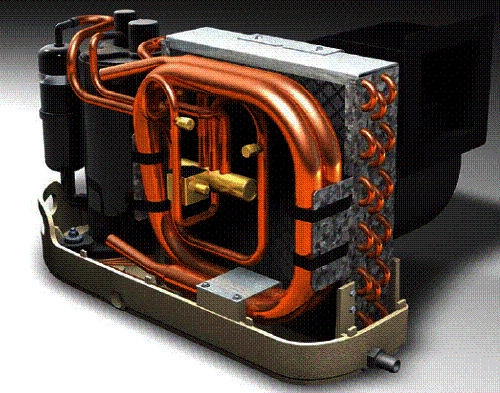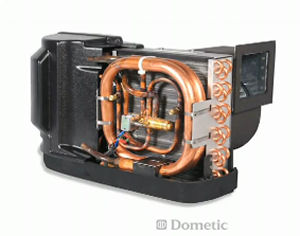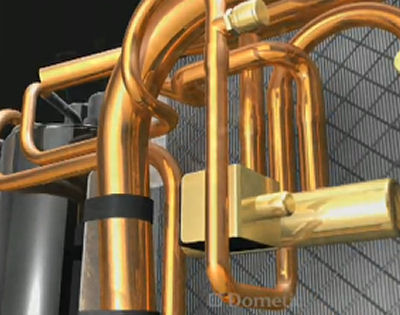Keeping Cool When Things Get Hot

Few skippers pay attention to their air conditioner until it stops cooling, but a bit of TLC now can forestall sweaty problems later on. Routine A/C maintenance is simple and inexpensive, and within the technical expertise of anyone with an opposable thumb. Combined with an annual professional checkup, the following simple procedures should keep your A/C chillin’.
Air conditioners exchange heat by means of circulating seawater, so keep the intake strainer clean and monitor the discharge waterflow to ensure plenty of H2O is pumping through the system. If the discharge becomes a trickle, but the strainer is clean, shut down the A/C and call a professional to troubleshoot the system.
Things that Can Go Wrong
Why not simply pull the raw-water pump apart and check its impeller? Because the problem could also be caused by clogged condenser coils: Algae, mineral scale and other contaminants in sea water can gradually block the passages; pros remove the gunk by circulating a weak solution of muriatic acid through the coils until they are flushed out. Unless you want to buy the equipment to do this, then deal with disposing of the acid legally, you’re better off paying your local A/C tech for a couple of hours of his time. Condenser coils should be flushed out periodically anyway -- how often depends on how and where you use your boat. If yours haven’t been cleaned in the past couple of years, now is a good time.

Larger yachts, over 75’ or so, often use chilled-water A/C systems. As the name suggests, chilled-water systems circulate cold water, rather than refrigerant, to the air handlers in the cabins. The water system must be filled for the A/C to work properly. While most chilled-water systems have pressure gauges that let the operator check for air in the system, a more obvious indicator is noise from the piping. Adding water is easy, but if it’s frequently necessary check for a leak.
Other Considerations
Along with water, A/C needs a free flow of air, too. Clean the air filters (one for each air handler, on the return-air grill) at least once a month, using either a vacuum cleaner or plain water. Let them dry before reinstalling. If you have a Dometic A/C, you can upgrade to their disposable Breathe Easy Air Filters, which, the company claims, “capture smoke, dust, lint, odors, pet dander and other airborne micro-particles.” Other A/C manufacturers and aftermarket companies offer similar filters. Look for them at your marine store.

When you clean the filters, switch the A/C to reverse-cycle and let it run for a minute to exercise the reversing valve. No, the reversing valve has nothing to do with the air filters, but if you switch cycles when you clean filters you won’t forget to do it. It’s like changing the batteries in your smoke detectors when you reset the clocks for Daylight Saving Time. And that’s about it: Air conditioning demands only minimal routine maintenance, simple stuff for any boat owner or crew. Most is do-it-yourself stuff that’ll cost you nothing, but it will keep your A/C, and your crew, running cool for the whole season.
Learn more about Dometic at www.dometic.com